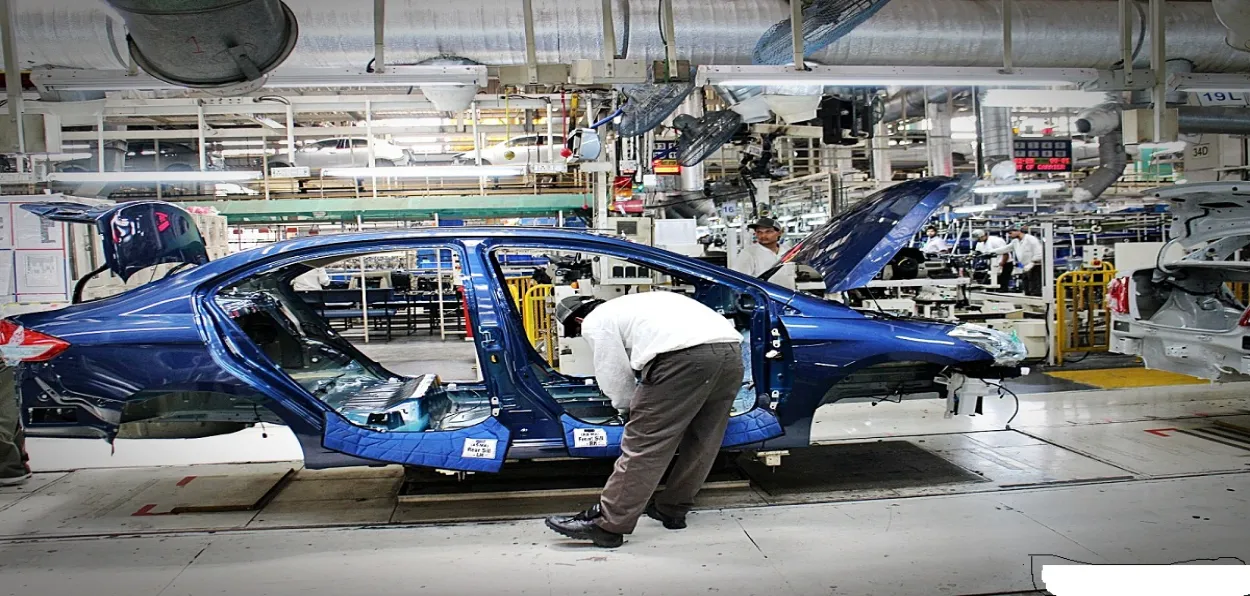
 Sushma Ramachandran
Sushma Ramachandran
Going by the latest data on sales for 2022-23, the automobile industry is reviving rapidly. This is good news for the economy as the industry plays a dominating role in the manufacturing sector. In case this momentum is sustained, it will help in ensuring that the pace of economic growth reaches the target of 6.4 percent in the current financial year. At this level, it is still expected to remain the fastest-growing major economy in the world.
According to data compiled from the vehicle registration app, Vahan, passenger vehicle sales have risen by as much as 27 percent while commercial vehicles have grown by a healthy 16 percent. The only letdown has been two-wheelers where demand has fallen and sale volumes have slipped back to levels reached about a decade ago.
The data must be viewed in the context of the automobile industry’s towering presence on the industrial scene. It contributes as much as 45 percent of the country’s manufacturing GDP and accounts for 7.1 percent of the overall GDP. It is also a major employer with a McKinsey survey having estimated that it provides 37 million direct and indirect jobs.
The survey noted that the industry serves as a bellwether to indicate the state of the economy. It cites the ominous fall in commercial vehicle sales as giving a hint of the challenges ahead in both 2012 and 2019. The sector is expected to account for 65 million new jobs by 2026.
Against this backdrop, the uptick in demand for automobiles in various categories over the past year is a significant development. The improvement in the auto sector follows the general sluggishness of the pandemic and the economic upheavals created by the Ukraine conflict. As has been well documented, the revival of worldwide industrial production in 2021 came along with a severe shortage of critical electronic goods like semiconductors or chips. The disruption of global supply chains at the time meant that production of a wide range of goods especially passenger cars in this country was stalled for lack of chips. These tiny electronic components were suddenly needed everywhere but production had stalled during the pandemic. So despite rising domestic demand for automobiles, output slowed down.
The chip availability situation has eased considerably lately leading to the current robust increase in passenger car sales. Apart from the industry’s revival, however, what is noteworthy now is the increasing focus being put on vehicles operating without the traditional internal combustion engine.
Automobile companies are pressing the accelerator on cars powered by electric batteries, CNG, and new-age hydrogen fuel cells. The shift has come about partly due to nudges given by a government trying to reduce imports of expensive crude oil as well as to cut carbon emissions. And partly it reflects growing consumer demand for cars fuelled by renewable energy sources.
The move towards EVs has also been given an impetus by several central and state subsidy schemes for electric and hybrid vehicles. The most notable of these is FAME (faster adoption and manufacturing of electric/hybrid vehicles) which provides incentives to reduce costs and subsidies to make vehicles more affordable.
The outcome of these efforts is that 11.23 lakh electric vehicles were sold in fiscal 2023 compared to 4.58 lakhs in the previous year, a spurt of 155 percent. The biggest increase is in two-wheelers which rose from 2.52 lakhs last year to 7.2 lakhs in fiscal 2023. Monthly sales of EVs have also crossed one lakh for the past six months.
The Indian sales of EVs are in line with global trends. These accounted for 14 percent of passenger car sales in the world in 2022, a huge increase from the 9 percent recorded in 2021. The International Energy Agency (IEA) has predicted that this will reach 60 percent of new car sales by 2030.
The drive towards new-age technologies was showcased recently at the Auto Expo in the capital which unveiled a series of models in the EV, hydrogen cell, and flexi-fuel spaces. The aggressive push towards renewables by automotive companies indicates that the strategy for the future is clearly to move away from the internal combustion engine and provide a wide range of options. For the time being, this may entail a slightly higher cost at the time of purchase but would translate into much lower operating expenses. For consumers, therefore, the immediate attraction is the vastly lower running cost compared to the existing range of conventional fuel vehicles.
The cost factor also seems to have driven sales of two-wheeler EVs which are currently dominating this segment. In contrast, however, sales of all types of two-wheelers have lagged far behind commercial vehicles and passenger cars. The reasons cited are the higher cost of vehicles due to the increase in component costs. But this phenomenon needs to be investigated more rigorously as it seems to point to lower income groups having failed to recover fully from the rigours of the pandemic. On the other hand, those in the higher income bracket seem to have returned to normalcy and are pushing sales of more expensive personal vehicles.
ALSO READ: Kashmir's dark secret: How drugs are destroying a place once known as heaven on earth
Thus it seems the resurgence of the automobile industry over the past 12 months is in line with the uneven economic recovery following the two pandemic-hit years. On the plus side, the industry is moving inexorably towards more sophisticated green technologies helping to reduce carbon emissions as well as costly fossil fuel imports in the long run. On the minus side, the lack of demand for smaller personal vehicles shows the recovery may not have been sufficiently broad-based. Even so, the revival of the automobile sector is encouraging as it indicates the economy remains resilient in the face of external headwinds such as the Ukraine conflict and global recessionary trends.
